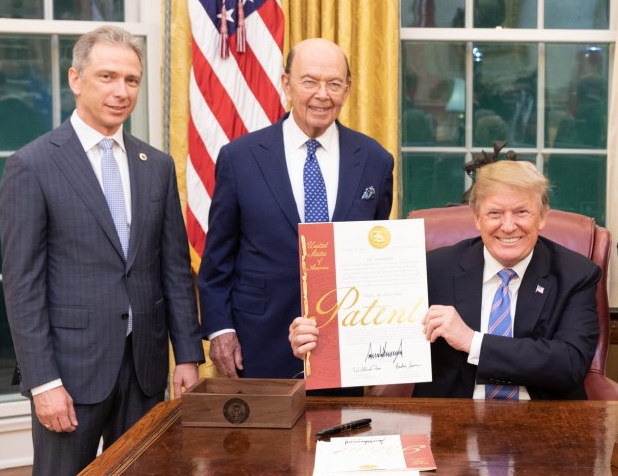

35 U.S.C. ۤ 101/Alice (SCOTUS) has compelled the U.S. Patent and Trademark Office (USPTO) to either stop granting software patents or risk the perception that it is granting patents it knows courts would reject (if a lawsuit was filed).
Compared with the organizations discussed above, the Electronic Frontier Foundation had quite a different view. EFF, on behalf of “its more than 39,000 dues-paying members,” said that the Guidance “effectively instructs examiners on how to narrow the Alice v. CLS Bank decision instead of how to apply it correctly,” and calls it “contrary to law.” EFF faulted the Guidance for defining ineligible abstract ideas to include only mental processes, mathematical formulas, and methods of organizing human activity; EFF asserted that cases have identified others “that do not neatly fit into those three narrow categories.” EFF also asserted that the Guidance creates “an entirely new and unprecedented step” for eligibility. EFF argued that even if the Federal Circuit can resolve patent-eligibility as a matter of law at the first step, “the same is not true for examiners,” who EFF argued should “conduct the full, two-step patent-eligibility analysis in the first instance” to fend off “a loophole that allows applicants to avoid the inventive concept requirement.” EFF noted that the Guidance sets up a situation in which “examiners will apply a substantially different test than district courts.”
More generally, EFF argued that “Alice has been a critical tool” in helping software developers and users “defend against meritless patent lawsuits and litigation threats.” EFF attributed a rise in R&D spending on “software & Internet” as attributable to Alice; it said the Guidance would “guarantee that patents on basic ideas continue to issue despite Alice, and thus continue to tax and impede research and innovation….”
EFF’s attempt to elicit input from opponents of the guidelines also experienced significant success. The organization’s “Save Alice” campaign provided model language for detractors to paste into their comments, and many individuals did just that. There were about 2,500 comments submitted to the USPTO by individuals, and a sampling suggests that the vast majority of these comments were cut-and-paste from the text EFF suggested for this campaign. By way of comparison, in the “pro-Guidance” camp, a far smaller but still significant number of comments were cut-and-paste from campaigns of one or more inventors’ associations. The number of bespoke comments from individuals paled in comparison to the cut-and-paste numbers.
Also somewhat critical of the Guidance was the Software & Information Industry Association. SIIA noted that its “members have benefitted greatly from the patents they own. Yet they also rely on the limits of patent protection, as those limits preserve and protect their ability to innovate. As such, SIIA’s collective membership sits at the crossroads of the countervailing interests….” SIIA asserted that synthesizing just a few categories from the judicial decisions resulted in pairings of cases and categories that “may or may not fit.” SIIA proposed “a fourth category to capture all precedent,” thereby allowing examiners to reject claims more directly based on a prior judicial opinion. SIIA said that with such a category, examiners would have more freedom to make initial rejections in appropriate circumstances without the need for higher level approval. In addition, SIIA worried that, “By specifying that the abstract idea must be ‘recited on [its] own per se,’ the 2019 Guidance may encourage clever drafting efforts to avoid explicitly reciting an exception in the claim.” SIIA saw this as a departure from prior guidance and the caselaw. Finally, SIIA said that the USPTO “should be clearer with respect to the specificity of the computer implementation necessary to amount to an integrated practical application.”
A belated Happy New Year to all of you! As I reflect on this column, which has gone through various permutations over the past seven years, I am amazed how readership has grown organically via the Tangible IP website from a dozen (including several family members) to more than 15,000 professionals in the IP and business communities.
I must admit, this baby is a real time investment. But every time I think of retiring it, someone new tells me that he or she actually reads it and even enjoys it. Go figure!